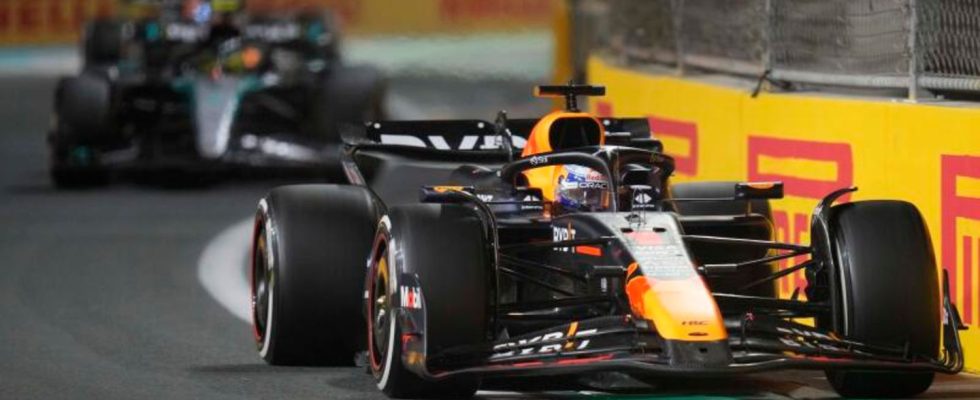Premier class
Why Formula 1 is becoming increasingly popular among young women
Formula 1 is the highest racing series in existence. For several years now, various marketing strategies have ensured greater popularity of the premier class among young women.
Formula 1 used to stand for fast cars and handsome guys. But the image has changed significantly. Young women are discovering the racing series for themselves: as fans, drivers and in a whole range of professions.
Two of these bloggers are Charlotte and Jannis. They run the Tiktok and Instagram accounts “TheGenZ1” and have been providing information about everything related to Formula 1 since the beginning of the 2023 season. Since the start, they say they have had around 80 percent female followers on both Instagram and Tiktok. Dem star they said: “We’re definitely noticing how more and more drivers want to actively market themselves on social media. And there are also more and more fans who create accounts just like us – we notice that just by looking at who something new follows us.”
One reason for the popularity of Formula 1: “Drive to Survive” on Netflix
The Netflix series “Drive to Survive” is also currently contributing to the popularity of Formula 1. It offers an insight into the background surrounding the racing weekends, but also serves a cliché image of women, that of the supposedly typical female Formula 1 fans: women who only follow the top racing class because of the drama – and the pretty drivers. Charlotte and Jannis contradict this cliché. And a look at her comment column also shows that things are matter-of-fact there. People exchange ideas, the discussions are subject-related. The influencers explain: “We see so much expertise and passion in our comment columns, which shows that the interest goes far beyond Netflix.”
The increasing number of female and young Formula 1 fans can not only be observed on social media, but also statistically proven. A global fan survey from 2021 surveyed 167,302 spectators and shows: Young women have discovered racing for themselves. 63 percent of those surveyed are under 34 years old. And since the previous survey in 2017, the proportion of women has increased from around 10 percent to 18.3 percent. The growing trend is clearly visible.
Silvia Schweiger is deputy head of the sports marketing agency RTR Sports and has been working in the industry for more than 20 years. She helps companies that want to invest in motorsports and has witnessed this change first hand. Dem star She said: “Formula One has evolved from a predominantly male audience to a vibrant and enthusiastic group of young women filling the stands.” This growing popularity has various reasons. According to Schweiger, an important aspect is that different female voices and roles are given more space in Formula 1 and that they are strengthened in many areas.
The industry also offers women interesting career prospects
There are now, for example, the W-Series and the Formula 1 Academy, both of which focus on promoting female drivers. And the proportion of women is also increasing off the track. The marketing expert is clear: “Young women see more future opportunities in this industry: we see engineers, aerodynamicists on the track, mechanics and drivers.”
Observers speak of a real boom among new target groups – brought about primarily by marketing strategies that are aimed at a more diverse external impact. But the Netflix series “Drive to Survive” also played a large part in the development, despite the somewhat antiquated image of women.
Marketing expert Silvia Schweiger attributes the increasing popularity of the racing series among new target groups primarily to the strong social media presence of its actors. The teams, Formula 1 and the individual drivers are now very actively represented on various social media platforms. Almost 27 million people follow the official Formula 1 account on Instagram. On Tiktok there are 8.1 million. In the 2023 season, a race was streamed live in portrait format on Tiktok – accessible free of charge to all users.
This insight on social media triggered a real chain reaction. More and more content is being produced and more and more consumed – especially by women. Silvia Schweiger says there is a “whole new group of young reporters, journalists, bloggers, content creators and drivers: they are young and tech-savvy, they have a voice on social media and women can identify with them and be inspired.”
2024 season
Formula 1 start: These drivers are chasing world champion Max Verstappen
One woman who is professionally accompanying this change in the racing industry is the ntv sports presenter Alessa-Luisa Naujoks. At the 2024 season opener in Bahrain, she reported on the race at the track. But she also knows how difficult it is to have to prove yourself in a male-dominated world. Although the 29-year-old has been working successfully as a sports presenter for years, she explains to the star, she still has the feeling that her job is a fight against prejudice. She says: “On site, we women were clearly outnumbered in the paddock in Bahrain.” But although there is still a long way to go between gender balance, she also recognizes the change in the industry: “Basically, I have the impression that more and more women are becoming enthusiastic about sport,” she says.
The bloggers Charlotte and Jannis have a similar impression. They also suspect that “measures like the W-Series, the F1 Academy, content creators who actively appeal to young women and a general “how hard can it be? Boys do it!”-Change in society, contribute to the growth of female fans in racing.”
So Formula 1 is in the midst of change. And this one is young – and female.


